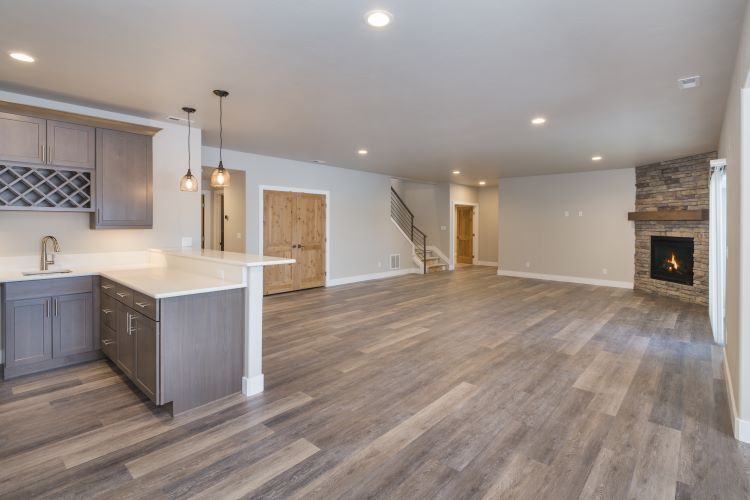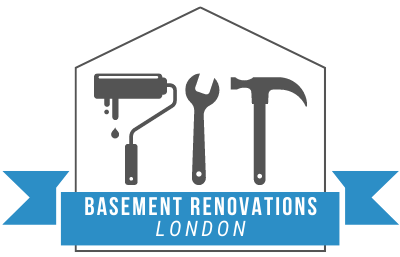How to Modernize an Old Basement

Transforming an old, outdated basement into a modern, functional space can significantly enhance your home’s value and livability. At Basement Renovations London, we specialize in bringing new life to basements, ensuring they become stylish and practical areas for your family to enjoy. In this article, we’ll explore some effective strategies to modernize your old basement, making it a contemporary and inviting part of your home.
1. Improve the Layout and Functionality
Evaluate the Existing Space
Start by assessing the current layout of your basement. Identify underutilized areas and think about how you can maximize the space. Consider different zones for various activities, such as a home office, entertainment area, gym, or guest room.
Open Concept Design
Creating an open concept design can make your basement feel more spacious and airy. Removing unnecessary walls and partitions will not only open up the space but also improve the flow and functionality.
2. Upgrade the Lighting
Add Layers of Lighting
Basements often suffer from poor lighting. To modernize your space, incorporate multiple layers of lighting, including ambient, task, and accent lighting. Use recessed ceiling lights, wall sconces, and stylish floor lamps to brighten up the area.
Natural Light
If possible, increase natural light by enlarging existing windows or adding new ones. Window wells can be installed to allow more sunlight to penetrate the basement, making it feel more welcoming and less cave-like.
3. Update the Flooring
Durable and Stylish Options
Replace old, worn-out flooring with modern, durable options. Luxury vinyl planks, engineered hardwood, and polished concrete are popular choices for basements. These materials are not only stylish but also resistant to moisture, which is crucial in a basement environment.
Add Area Rugs
To add warmth and comfort, consider placing area rugs in key areas. Rugs can also define different zones within the open space and add a pop of color and texture to the room.
4. Modernize the Walls and Ceilings
Fresh Paint
A fresh coat of paint can do wonders for an old basement. Opt for light, neutral colors to make the space feel larger and more inviting. Accentuate with bold colors or patterns on one feature wall for added interest.
Drywall and Ceiling Tiles
Replace old paneling or exposed brick with drywall for a clean, modern look. For the ceiling, consider installing drop ceiling tiles or drywall to hide any exposed pipes or wires, giving the basement a polished finish.
5. Enhance Storage Solutions
Built-In Storage
Incorporate built-in storage solutions to keep the basement organized and clutter-free. Custom shelves, cabinets, and closets can be designed to fit your specific needs and make the most of the available space.
Multi-Functional Furniture
Choose furniture pieces that offer additional storage, such as ottomans with hidden compartments or beds with built-in drawers. This approach helps keep the space tidy while maximizing functionality.
6. Upgrade Utilities and Insulation
Improve Insulation
Proper insulation is crucial for a comfortable basement. Upgrading insulation will help regulate temperature, reduce energy costs, and prevent moisture issues. Ensure walls, floors, and ceilings are adequately insulated.
Modern HVAC and Plumbing
Modernize your basement’s HVAC and plumbing systems to improve air quality and comfort. Consider installing a dehumidifier to control humidity levels and prevent mold growth.
7. Add Modern Amenities
Home Theater
Transform part of your basement into a home theater with a large screen, surround sound, and comfortable seating. This can become a central entertainment hub for family and friends.
Home Gym
A home gym is another popular addition to modern basements. Install rubber flooring, mirrors, and essential workout equipment to create a motivating workout space.
Wet Bar or Kitchenette
For added convenience and entertainment, consider adding a wet bar or kitchenette. This can be a great feature for hosting guests and making the basement more self-sufficient.
8. Personalize with Décor
Contemporary Furniture
Choose contemporary furniture pieces that reflect your personal style. Opt for clean lines, modern materials, and a cohesive color scheme to create a stylish and comfortable environment.
Art and Accessories
Incorporate art, accessories, and plants to add personality and warmth to your basement. These finishing touches can make the space feel more inviting and connected to the rest of your home.
Conclusion
Modernizing an old basement can dramatically increase your home’s functionality and value. By improving the layout, updating lighting and flooring, enhancing storage, and adding modern amenities, you can transform your basement into a contemporary and enjoyable living space. At Basement Renovations London, we are dedicated to helping you achieve the basement of your dreams. Contact us today to start planning your basement renovation project and turn your old basement into a modern masterpiece.
You might also like




